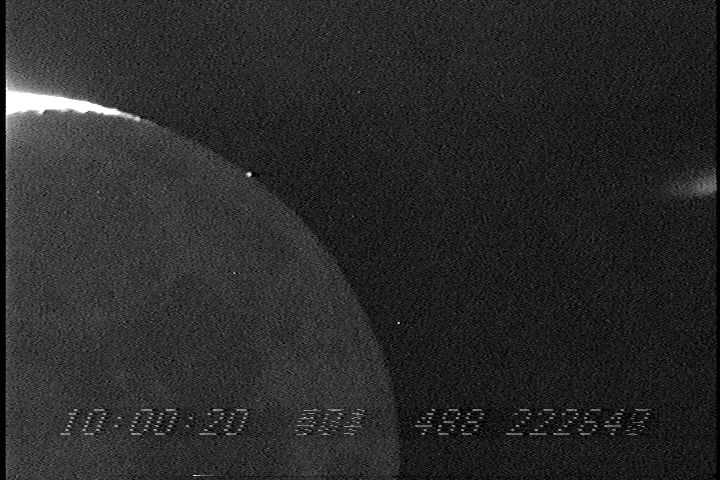
On UT 2007 July 12, the Moon's limb passed in front of the bright star mu Arietis. Many observers recorded this event: see David Dunham's summary of the observations. I did a little analysis of some video recordings which were kindly made available.
David Dunham recorded the event from two sites near Hegar Rd. about 2.5 miles north of Hockley and about 4 miles east of Waller, Texas.
Note that mu Arietis is a double star, with some reports of a third component.
In the measurements below, I believe that there is no sign of the duplicity of the system, but that's based solely on a quick scan by eye.
Each of Dunham's video consists of digitized frames of 720 x 480 pixels. I used TMPGEnc to break the AVI video files into individual JPEG images, each of which had 8 bits per pixel. Here's an example from the Northern video, frame number 0:

Note that there are no reference stars in the field of either video. That means that the photometry I present below will very likely have gradual drifts over time, due to changes in voltages, or the passing of thin clouds, or variable gain affected by the bright lunar limb, etc. The FWHM of the stellar image was about 3.5 pixels.
I followed my usual procedure:
I decided that the aperture of radius 4 pixels yields the best results, but I'll provide the measurements for all three apertures in the tables below. I'll use a linear scale in integrated light intensity.
The Northern video has 2526 frames, which I numbered 0 to 2525. The KIWI OSD timestamps indicate that two fields were combined into a single frame. I followed this guide to KIWI timestamps to estimate the midpoint of each frame's exposure; Kiwi Geoff himself wrote in to help me with the details, too -- thanks!
Note that the difference in time, divided by the number of frames, yields a rate of 29.97 frames per second -- just what we expect.
Dunham's southern station has no time information.
So, let's look at the southern station's light curve:
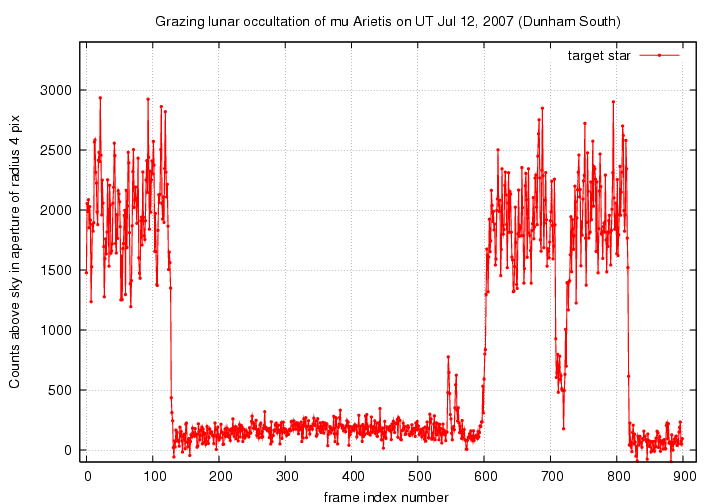
Note the small drift in light when the star is occulted -- that is due to a number of effects, including possible mis-centering of the aperture from the (occulted) star's position.
Now, we can zoom in several events. The first disappearance:
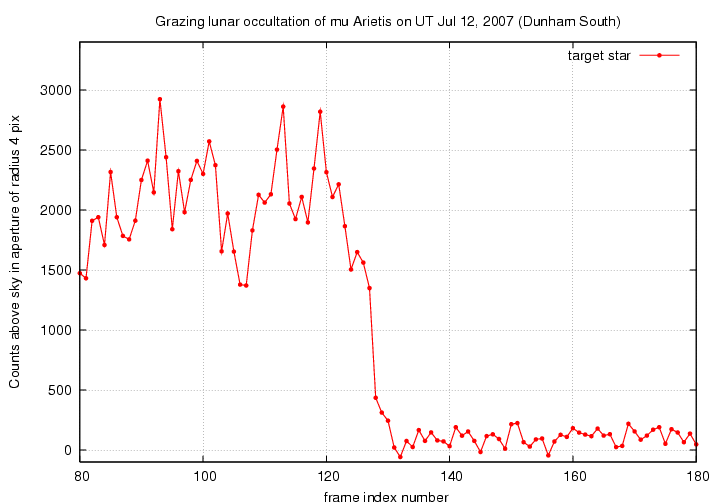
.. a brief flash ...
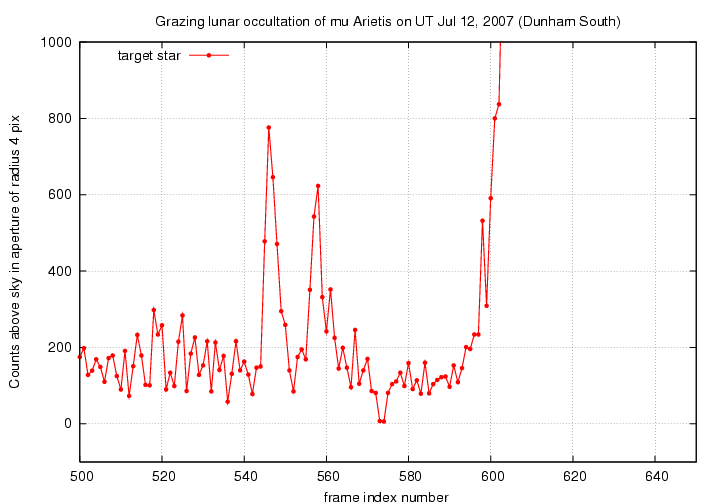
... the final pair of disappearances ...
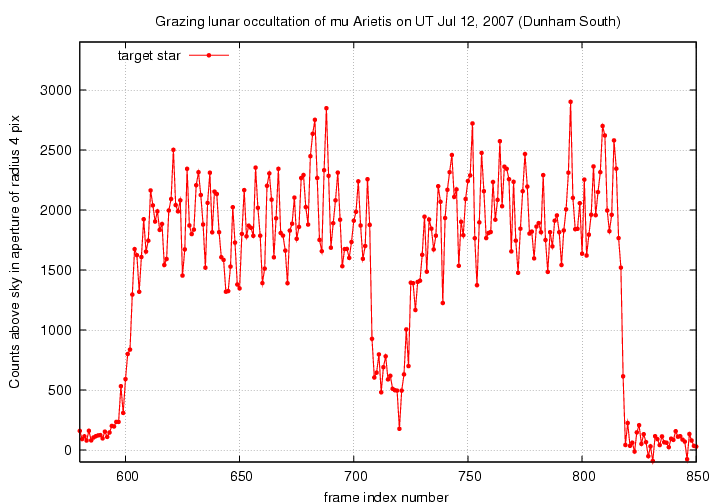
Here are the light curve measurements in a plain ASCII text file. The "uncertainty" values are not very accurate. The format is
col 1 frame index number col 2 target flux in aperture of radius 3 pixels col 3 uncert in target flux in aperture of radius 3 pixels col 4 target flux in aperture of radius 4 pixels col 5 uncert in target flux in aperture of radius 4 pixels col 6 target flux in aperture of radius 5 pixels col 7 uncert in target flux in aperture of radius 5 pixels
Now let's look at the northern station's light curve:
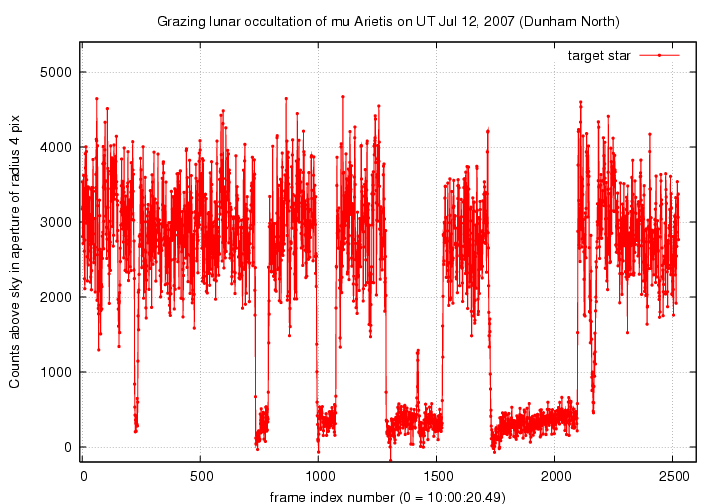
Now, we can zoom in several events. A very brief dip:
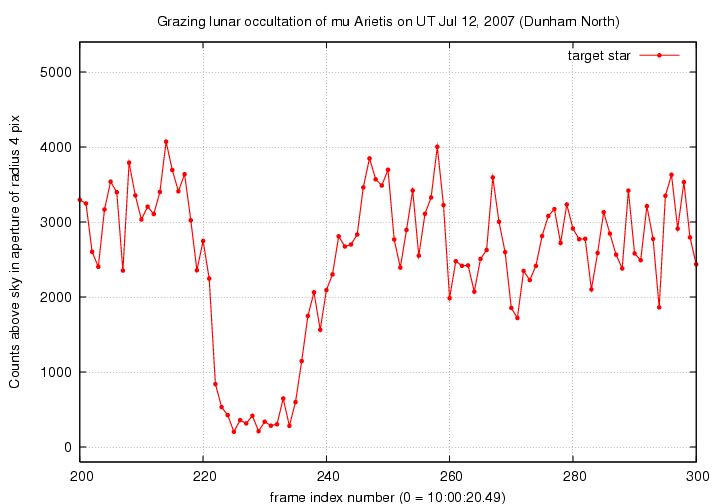
... the first two big R and D pairs ...
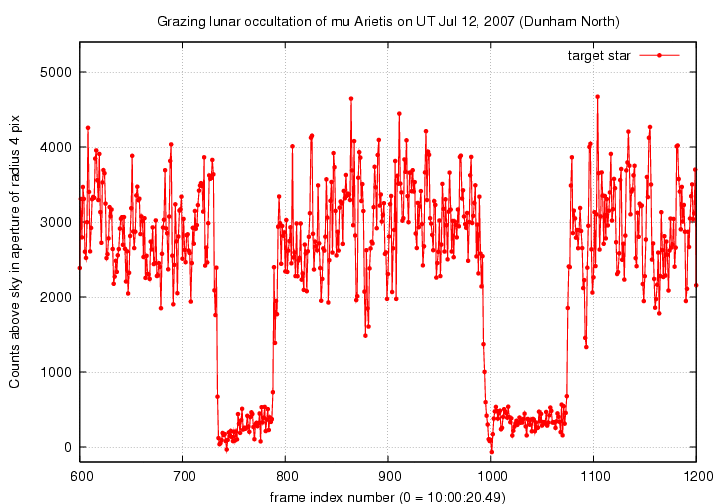
... a long disappearance with a brief, minor flash in the middle ...
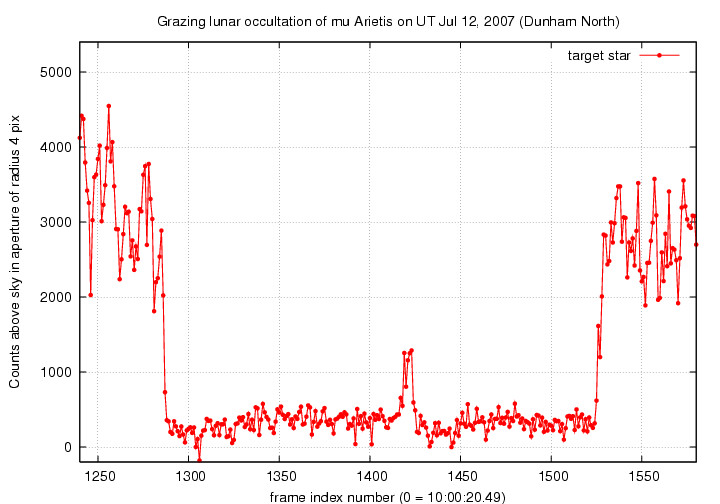
.. and the final events, a long disappearance followed by a short one ..
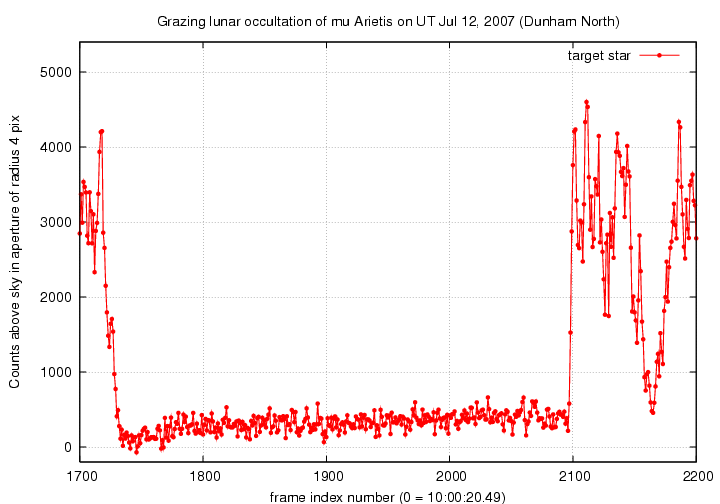
Here are the light curve measurements in a plain ASCII text file.